If you were a comic book fan who played video games back in the late ’80s and early ’90s, you were probably pretty disappointed with your selection of titles. X-Men on the NES was perhaps the strongest argument for hunting mutants into extinction, and other heroes like Batman and Superman had more misses than hits in their careers (though NES Batmanis still one of the best super hero games ever made. Period). No hero was safe, and even Marvel’s iconic Spider-Man had been suffering since the Atari 2600 days.
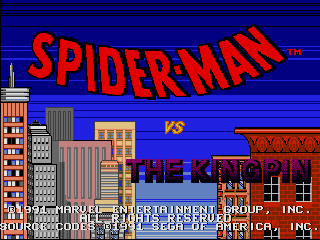 That changed thankfully, with Sega’s 1991 release of Spider-Man vs. the Kingpin (henceforth referred to as SPvK). A project headed by producer Ed Annunziata (Chakan, Ecco the Dolphin), the game finally brought super heroes into the modern era, taking them beyond the standard punch-and-kick gameplay that had become custom. Indeed, SMvK has that too, but it actually included elements that were specific to its star. While not the first time a particular hero’s powers were incorporated into the gameplay, it was the first time they were given center stage.
That changed thankfully, with Sega’s 1991 release of Spider-Man vs. the Kingpin (henceforth referred to as SPvK). A project headed by producer Ed Annunziata (Chakan, Ecco the Dolphin), the game finally brought super heroes into the modern era, taking them beyond the standard punch-and-kick gameplay that had become custom. Indeed, SMvK has that too, but it actually included elements that were specific to its star. While not the first time a particular hero’s powers were incorporated into the gameplay, it was the first time they were given center stage.
I still remember the day I took home my copy. Have you ever bought a game and spent the entire ride home just dissecting every square inch of the box? Imagine then, my apprehension as I sat in the car, silent and studious, attempting to discern whether or not I had flushed my hard-earned cash down the drain. I still had those 8-bit failures fresh in my brain (remember Silver Surfer? Yeow!), and I was hoping that my 16-bit machine could rise above such shovelware.
After swinging through New York for a while, it became wonderfully apparent that it had.
Does Whatever A Spider Can
Swinging through New York… that was the first thing that hit me. I could actually web swing! You can’t put a price on authenticity, and to able to do something so fundamentally Spidey seems like a no-brainer. Sadly, this had never been the case. Spider-Man on the Atari 2600 featured web swinging in its gameplay, but the limits of the hardware sadly kept it from impacting the game design the way it should have. Spider-Man: Return of the Sinister Six on the NES was so problem-ridden that it was hard enough for the player to just keep Spidey alive, let alone make him act like his comic book counterpart. SMvK finally allows players to use Spidey’s webbing as a principal means of locomotion. Heck, the Central Park level requires it if you want to get to a fire hydrant before Sandman. The webbed wonder’s animation changes while swinging, and most importantly, the movement feels natural and smooth.
Click to see all the cut scenes!
For that reason, I have to take issue with how many people tend to lump SMvK in with the other trash, citing the lack of a truly comic book-like story and lack of character elements incorporated. Take this quote by Vicarious Visions CEO Karthik Bala for a Spider-Man retrospective on 1up.com, for example. “Back in the 16-bit era, it was more about taking an established template of a game — platformer, brawler, et cetera — and slapping the Spider-Man license on it. It didn’t have to be Spider-Man as that sprite…you could’ve put in Frog-Man. Since Activision took on the franchise, the mindset shifted to: ‘What’s unique about Spider-Man that no other game experience can provide?’ By translating his abilities to the screen with unique gameplay mechanics and designing the game around them, we made the games better.”
I think Mr. Bala never played SMvK! It’s a simple thing to boast about how modern games can incorporate all aspects of the character’s abilities, given how powerful today’s hardware is. To me, that makes SMvK that much more special. This is evident in how SMvK uses Spider-Man’s powers throughout the game. For instance, something as basic as wall crawling is put to good use in the level design, and you simply cannot advance in many areas unless you use it. The environment can even impact its effectiveness, and a good example of this is how the sewers (the Lizard’s level) have slippery walls that cause Spidey to slowly slide downwards if he remains still for too long.
Click to see all the stages!
Another difference between Sega’s effort and other titles is that while Spider-Man does punch and kick, it isn’t his primary attack. Smart players rely on his famous webbing to dispatch baddies, who crumple to the floor, immobilized by it. Firing both horizontally and diagonally, Spider-Man can use his webbing to incapacitate everything from guard dogs to policemen. It isn’t quite as powerful against bosses, but that’s to be expected. You are also able form a web shield to protect yourself from gunfire, something quite useful when surrounded by thugs.
Just as in the comics, Spider-Man has a limited supply of web fluid, and wasting it all on common enemies can leave players in a serious bind come boss time. Should you need to replenish and heal up, you can return to Peter Parker’s apartment to do so. The only downside is that there’s no skylight!
Who’s the Boss?
Some of the most important parts of any Spider-Man comic are his epic battles with super villains. Few heroes have a rogues gallery as extensive as the wall crawler, and Sega has packaged as many as possible into this tiny cart. Going back to what Mr. Bala said about the 16-bit games, he adds later on in the article “The Amazing Spider-Man vs. The Kingpin had him almost aimlessly hunting down his foes hoping to get keys to a bomb. These games failed to make use of one of the things that draws so many to Spider-Man’s adventures in the first place: the story.”
I can accept that. The plot in SMvK is not particularly strong, and it tends to fall into the standard “fight baddies until you beat the big boss” formula most games of the era used. That’s part of the problem of limited hardware, and while it is certainly a limitation, it is by no means an excuse. To get around this problem, Sega concocted a storyline in which the Kingpin (Wilson Fisk) has set a bomb that will destroy New York City in twenty-four hours. Making a public statement on television, Fisk then frames Spider-Man for the incident. To further attack our hero, he kidnaps Mary Jane Watson, Spidey’s girlfriend. In order to get her back, the web slinger has to defeat several of his famous foes to retrieve keys to the bomb. His only hope for saving both his lady love and his reputation is to get each key and make it to the bomb in time.
Click to see all the bosses!
Yeah, I know. It’s not the deepest plot. At least Sega found a decent way to incorporate the villains. Sandman, Venom, the Lizard, the Hobgoblin, and Dr. Octopus are some of the more prominent enemies the player faces. Some, like Sandman, require a specific technique to beat, and you can’t just pelt them with webbing until they capitulate. They all have their signature attacks, and the same technique can’t be applied to all of them. Venom, for example, will not go down the same way as Electro, and the Spidey’s webbing is almost useless against the Lizard. The final challenge is of course, the Kingpin himself, and the man is definitely a beast, both in size and strength.
Though it doesn’t directly affect the plot, it was a nice touch that Sega incorporated a bit of Spidey’s alter-ego, Peter Parker. By accessing the pause menu, players can select a camera icon that allows them to take pictures of the screen. These pictures can then be sold to the Daily Bugle for much needed web fluid. The better the picture, the more money you get, so it’s vital to snap some quality pics of bosses before you take them out.
Gets Your Spidey Sense Tingling
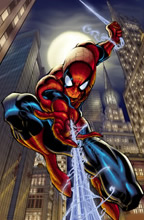 Though newer Spider-Man games have managed to do a much better job of bringing the character’s comic book origins to video games, it is here with SMvK that the upwards trend in faithfulness began. It might seem quite rough in practice today, but you can definitely see how much care has been taken to ensure that as much of what makes Spider-Man such a great character as possible is included. If you go down the checklist, it’s all here, even Spidey’s famous wit. The Sega CD version, unfortunately, made some major revisions to the gameplay and level design that I don’t agree with, so this is the version for me.
Though newer Spider-Man games have managed to do a much better job of bringing the character’s comic book origins to video games, it is here with SMvK that the upwards trend in faithfulness began. It might seem quite rough in practice today, but you can definitely see how much care has been taken to ensure that as much of what makes Spider-Man such a great character as possible is included. If you go down the checklist, it’s all here, even Spidey’s famous wit. The Sega CD version, unfortunately, made some major revisions to the gameplay and level design that I don’t agree with, so this is the version for me.
I’m disappointed that Acclaim, the company that followed Sega with the Spider-Man license, didn’t follow through on the advances in gameplay made by SMvK. Instead, it continued the shallow beat-’em-up licensed fare to which Mr. Bala referred. The progress shown by Sega’s project was swallowed up by so many other mediocre comic book-based games, and it wasn’t until Activision’s Spider-Man (N64, Playstation, Dreamcast) that it finally surfaced again.
To me, that is why this game is so significant. I’m sure that opinions regarding it are going to be divided, given that it isn’t exceptional when compared to other 16-bit games of similar style. The visuals are nothing spectacular, and the gameplay itself is about as deep as the story. However, all of that has little bearing on the fact that this is the first Spider-Man game to take his individual powers into account and be designed around them, rather than the other way around. As Bala stated, many other attempts were generic, licensed garbage that simply had a specific character inserted into them. SMvK, on the other hand, would not be the same with anyone else. This is a game specifically made with the wall crawler’s abilities in mind, and it set the stage for later efforts that were finally able to fully explore his powers the way comic book fans truly wanted. Like it or hate it, it’s a milestone.

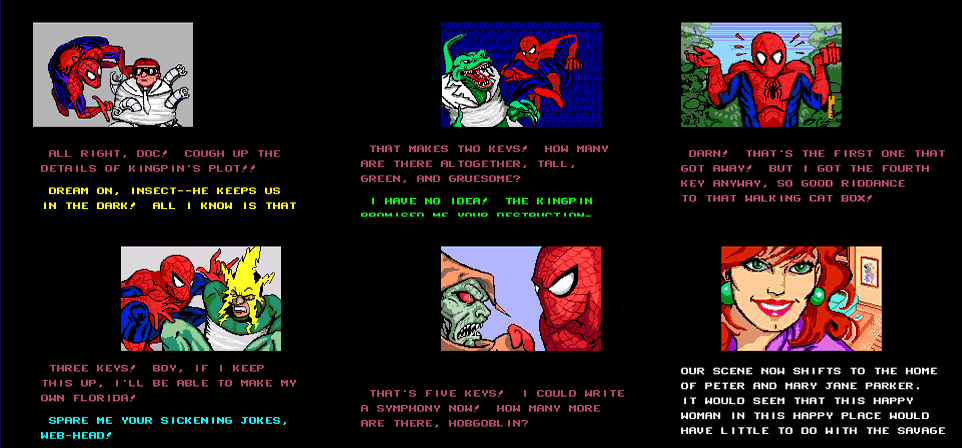
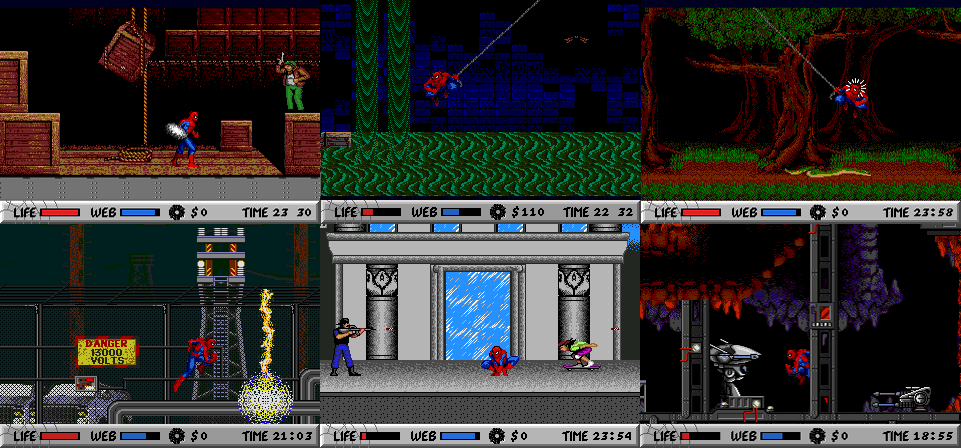
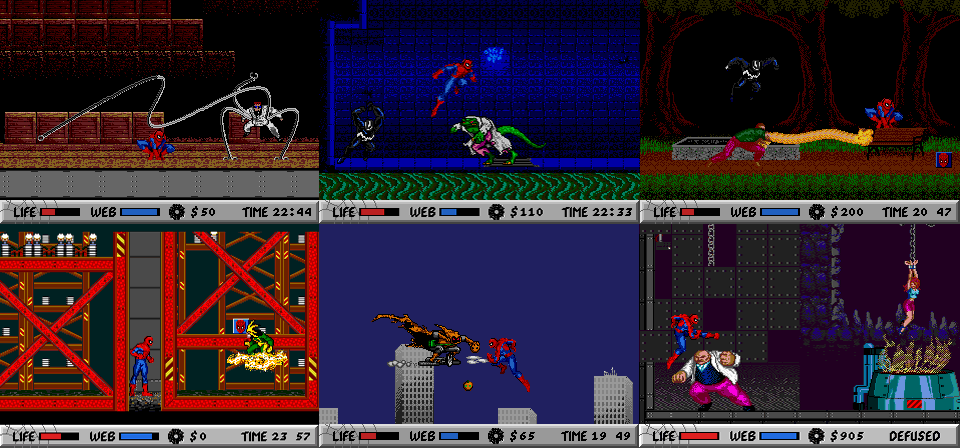
Recent Comments